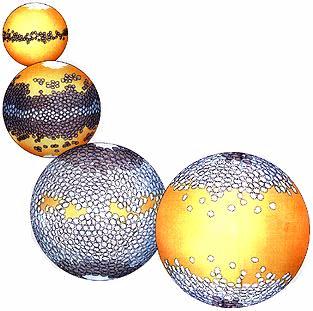 The other theory states that stability increases with an increase in biodiversity. In the late eighties, James Lovelock built a computer model called 'Daisyworld', of which one of the outcomes was that the more species there were in the ecosystem, the greater its stability. In Daisyworld, a planet/star system identical to ours was created, the only difference being that the only two species on the world were white and black daisies. In the distant past, only the equatorial regions would have received enough heat for the daisies to grow. The dark daisies, which absorb heat, would have flourished on this cold world. Gradually the dark daisies would have covered the planet, eventually warming the overall temperature through their absorption of heat.
The other theory states that stability increases with an increase in biodiversity. In the late eighties, James Lovelock built a computer model called 'Daisyworld', of which one of the outcomes was that the more species there were in the ecosystem, the greater its stability. In Daisyworld, a planet/star system identical to ours was created, the only difference being that the only two species on the world were white and black daisies. In the distant past, only the equatorial regions would have received enough heat for the daisies to grow. The dark daisies, which absorb heat, would have flourished on this cold world. Gradually the dark daisies would have covered the planet, eventually warming the overall temperature through their absorption of heat.
As the star's luminosity increased, the temperature would become much warmer, and the lighter daisies, reflecting heat and light, thereby staying much cooler, would become the dominant species. Ultimately, a steady state is reached, with a mean albedo close to what is needed for optimum daisy growth. As the star gradually heats up, the planet is eventually covered in white daisies, until the heat becomes so great they are insufficient to keep a decent temperature. Daisyworld finally expires. (Lovelock, 1995)
.gif)

.gif)